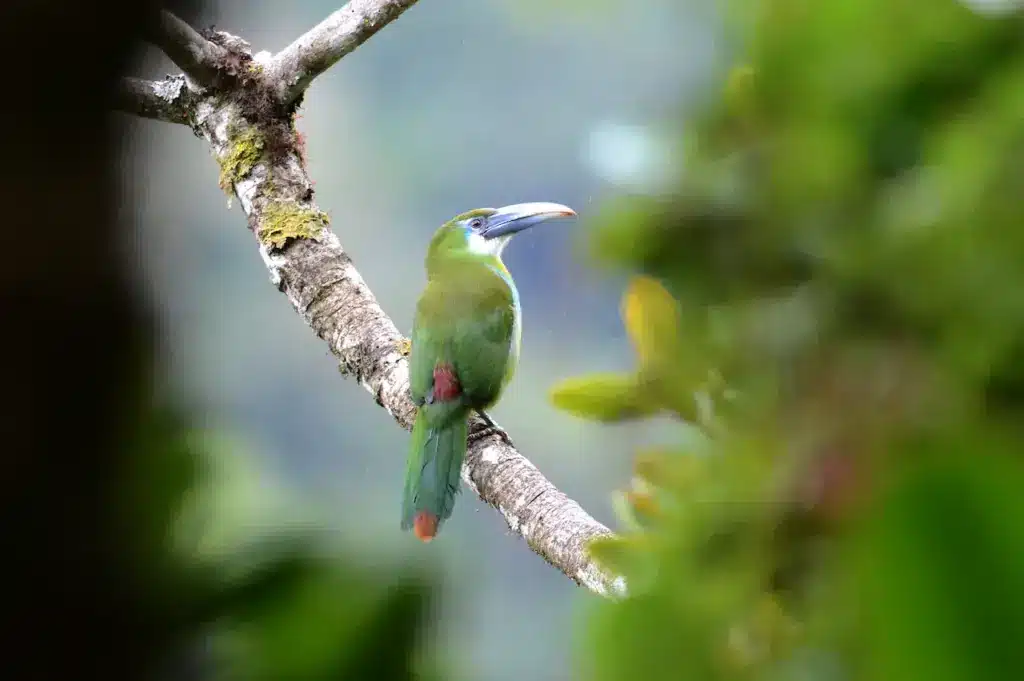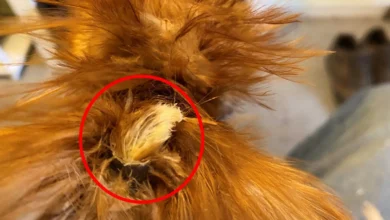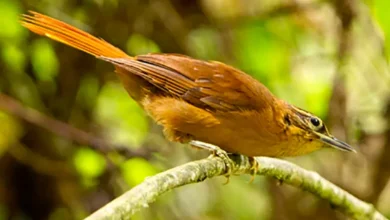The Blue-banded Toucanets (Aulacorhynchus coeruleicinctis) – also known as Blue-throated Toucanets – are South American toucanets that occur naturally in Bolivia and Peru, where they inhabit subtropical or tropical moist montanes.
The subspecies borealis found in Junín (north-central Peru) is by most authorities considered invalid, as it is based on an individual, not geographical, variation.

Alternate (Global) Names:
Chinese: ????? … Czech: Arassari modropruhý … Dutch: Blauwbandarassari, Blauwband-arassari … Danish: Blåbåndet Tukanet … German: Grauschnabelarassari, Grauschnabel-Arassari … Finnish: Sinivyötukaani … French: Toucanet à ceinture bleue … Italian: Tucanetto bandablu, Tucanetto bandacerulea … Japanese: aoobimidorichuuhashi … Norwegian: Blåbåndtukan … Polish: pieprzojad andyjski … Russian: ?????????? ??????? … Slovak: tukaník sivozobý … Spanish: Tucancito de Pecho Celeste, Tucanete Pechiazul … Swedish: Blåbandad tukanett
Distribution / Range
The Blue-banded Toucanets occur naturally in southern Huánuco in Peru, on the eastern Andean slope, including a few isolated montane areas, to south and southeastern Bolivia (Chuquisaca, Santa Cruz).
Description
The Blue-banded Toucanet has a mostly forest-green plumage, with a white stripe extending from its eyes to the ear coverts (feathers covering the ears) and a white throat. Below the light eyes are some blue markings. This species was named for the blue band around its lower chest. The large bill is black at the base turning greyish white towards the tip. The top of the upper beak is whitish.
They are about 15 – 17 inches (38 – 43 cm) long – including the tail) and weigh between 6.1 – 9.1 oz (173 – 257 grams).
Blue-banded Toucanet Lifespan
They are fairly long-lived with a lifespan around 20 years.
Breeding / Nesting
The mating ritual is a fun-loving affair for toucans, as they throw fruit to one another.
Like all of their other activities, nesting happens high up in hollow areas in trees. The bill is not effective for digging or any other type of extensive excavation work and so they must rely on holes already formed by other means.
The nests are not lined, but the two to four shiny white eggs that are laid each year rest on a few wood chips created while enlarging the opening or on various kinds of regurgitated seeds collected for this purpose.
Parents share equally in incubation duties, but rarely sit on the nest for more than an hour at a time and the eggs are often left uncovered. Both parents share in feeding fruit to the babies for up to 8 weeks.
After 16 days the nestlings are born blind, with no trace of down on their pink skin. The bill is unremarkable until about 16 days old when it takes on the distinguishing features of the toucan, and requires up to four months to develop fully. Feathers begin to expand at 4 weeks.
Babies have pads on their elbows that protect their feet by keeping them elevated until they fledge.
Breeding in captivity requires attention to a number of details. Even successful breeders report rates as low as 30% for the incubation of eggs.



